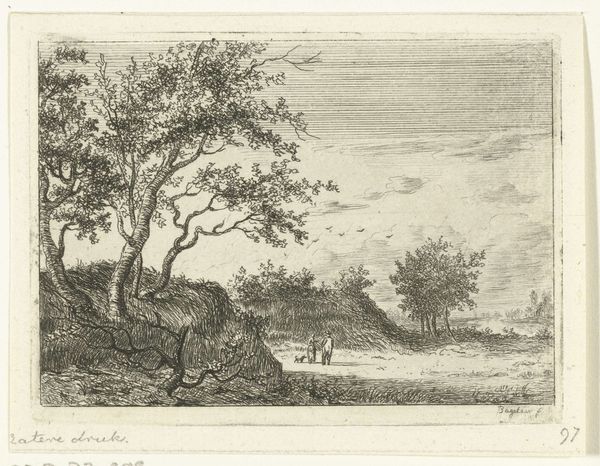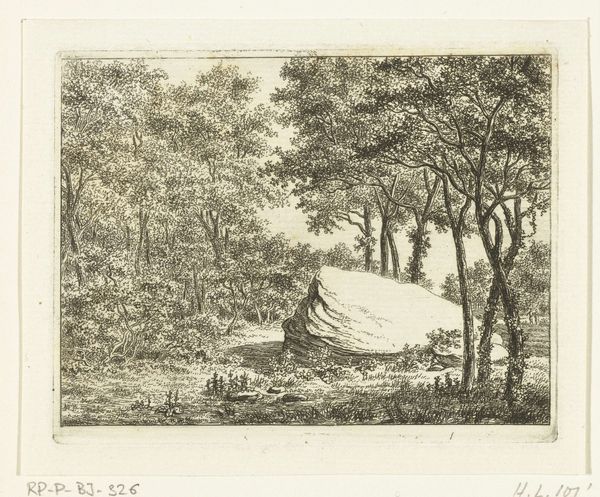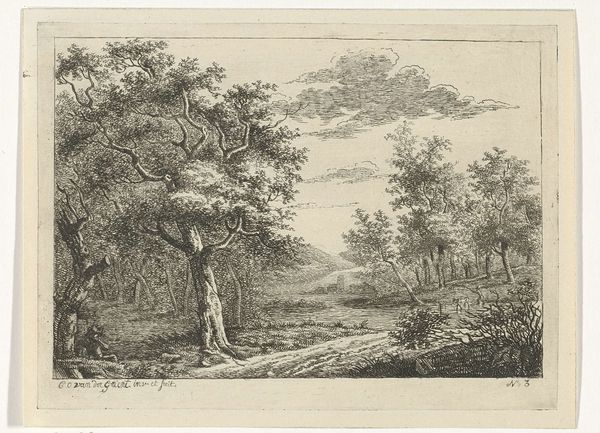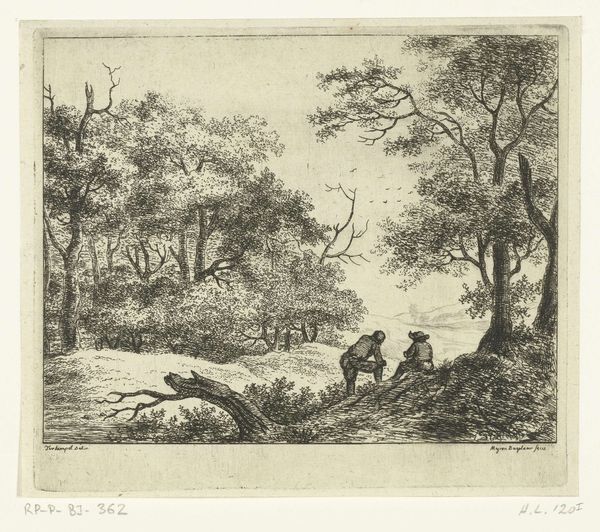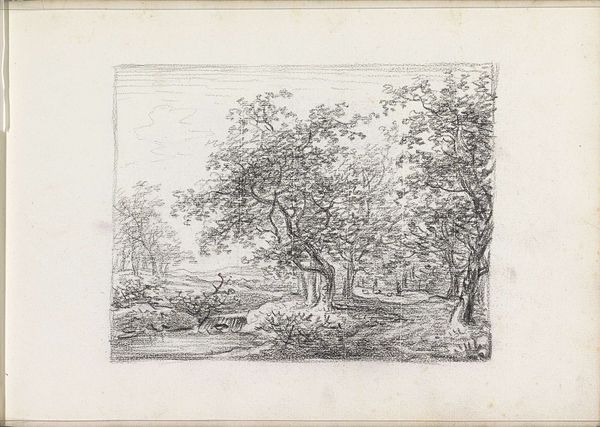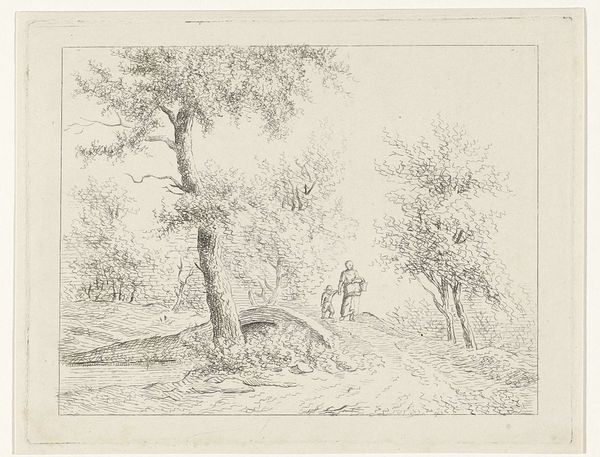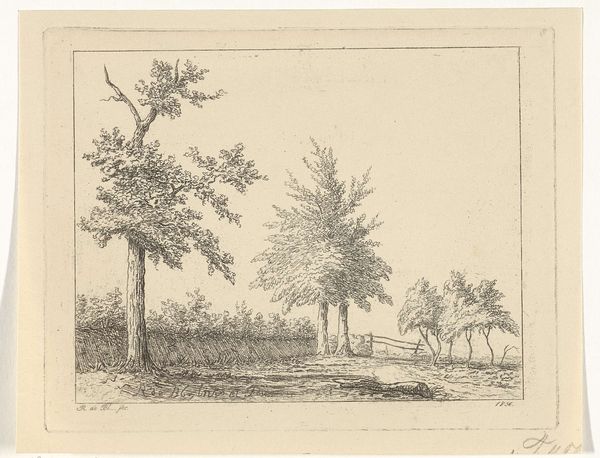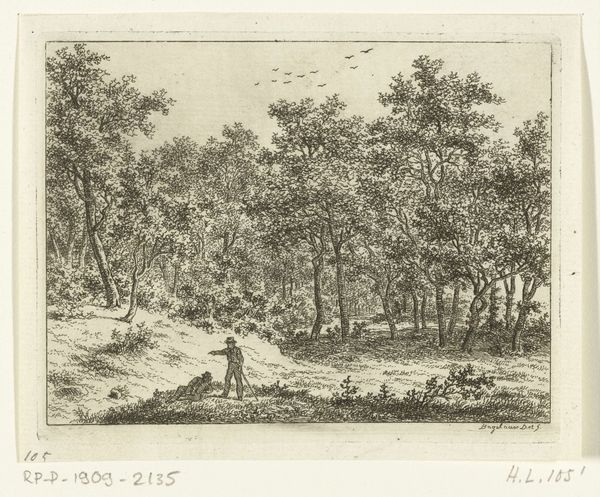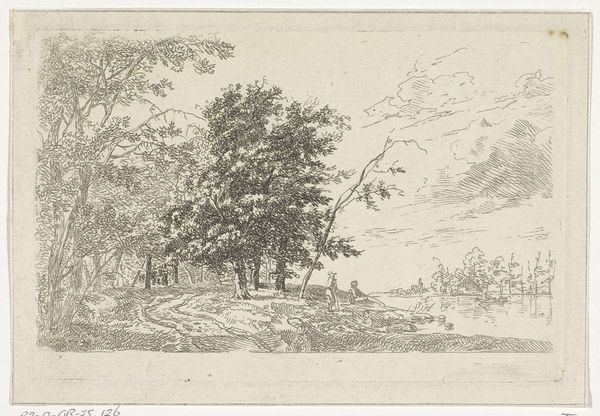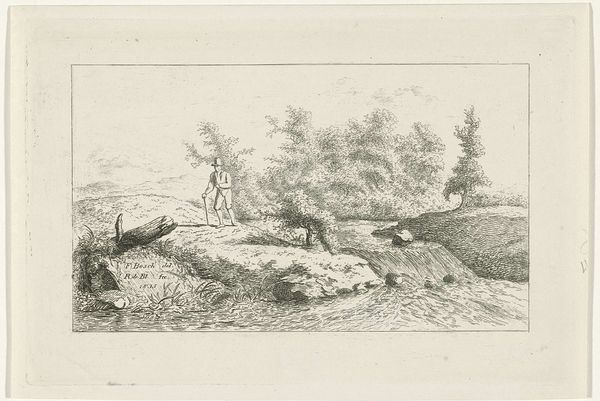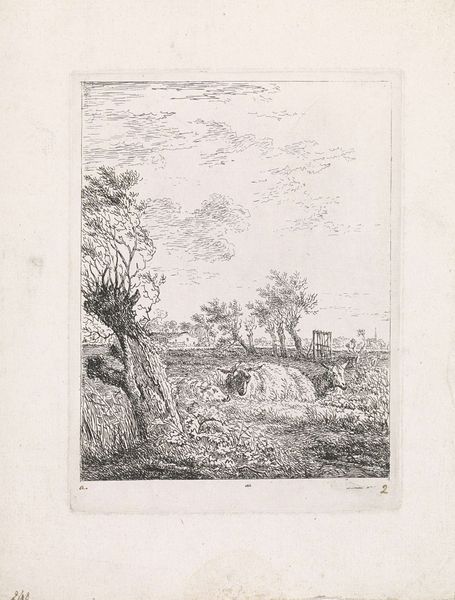
print, etching
# print
#
etching
#
landscape
#
etching
#
figuration
#
line
#
genre-painting
Dimensions: height 85 mm, width 106 mm
Copyright: Rijks Museum: Open Domain
Ernst Willem Jan Bagelaar created this landscape scene, "Duinlandschap met man, vrouw en hond," using etching, a printmaking process dependent on the corrosive action of acid. The artist would have coated a metal plate with a waxy, acid-resistant substance, then scratched an image into that coating. Immersing the plate in acid would bite away the exposed lines, leaving an intaglio image that could then be inked and printed. The fineness of the lines here suggests Bagelaar’s mastery of the technique. Printmaking like this was essential to the development of modern visual culture; it allowed images to be reproduced and disseminated widely. In this case, we see the natural world filtered through a very particular lens – not a heroic vista but a peaceful scene of everyday life. The material process is thus intertwined with social context, reflecting both the technical skill of the artist and the rise of a middle-class audience interested in scenes of leisure and quiet contemplation. When we look closely at how things are made, we can see these connections between art, labor, and the world around us.
Comments
No comments
Be the first to comment and join the conversation on the ultimate creative platform.
